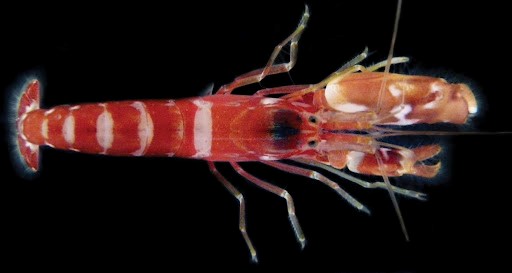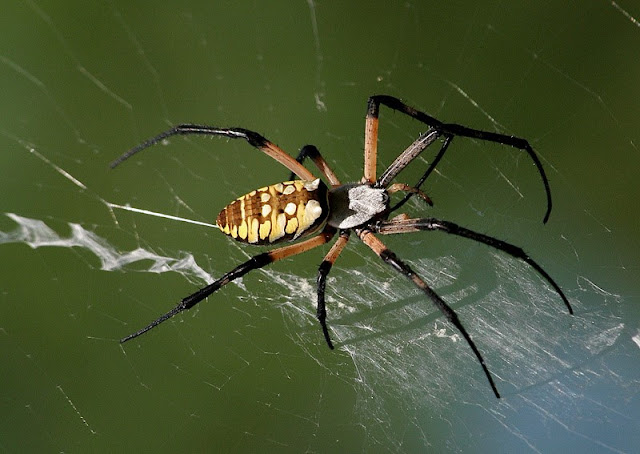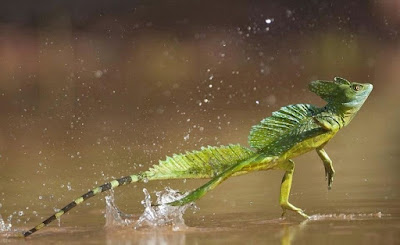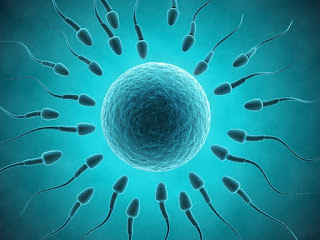Pistol Shrimp Shoot Bubbles as Hot as the Sun and Faster than Sound
Pistol
Shrimp. Photo Credit: Trevor Cox
Snap! Swish! Boom! Bang!
For the marine pistol shrimp, bubbles are more than
air— they’re life and death. Pistol shrimp use sonic hunting to stun and kill
prey using bubble ‘bullets.’ Like most arthropods, pistol shrimp employ tough
exoskeletons and sharp raptorial appendages for protection and hunting. The
catch: pistol shrimp have a built-in weapon that kills without contact. A
highly adapted, enlarged snapper claw allows pistol shrimp to dexterously open
and close the appendage with incredible speed (despite immense water pressure
and resistance). More than a physical feat, evolution has kept this capability
around in more than 600 species belonging to the Alpheidae family!
Pistol
Shrimp Popping Bubble. Video Credit: BBC
Pistol shrimp use snapper claws to deform bubbles, a
process that releases immense force and heat upon their targets. To make the
infamous snap, the dactylus (top pincer) cocks open, exposing a protruding plunger-like
top. The pollex (bottom pincer) sits immobile with an awaiting socket. As the
claw snaps shut, the plunger rapidly meets the socket, pushing water out from
between the claw sections. During fast claw closure, a high-velocity jet forms
and creates a vortex, as water rolls-up around itself. These jets of water have
been measured at 65 miles an hour! The rolling water’s intense swirling motion
produces strong depressurization, leading to a low-pressure area directly
behind the jet stream. The low-pressure zone forms a gas bubble in the vortex’s
core. Within microseconds however, the surrounding water pushes in on the
bubble, making the bubble collapse asymmetrically. Rapid spread of the gas pocket
results in a flat bowl-like bubble, also known as a cavitation
ring. The cavitation ring then moves along a straight line (jet axis),
collapses, and rebounds. The implosion sends a loud 210 decibel pop (louder
than a gun) through the water; the accompanying shockwave stuns, and sometimes
even kills, prey without direct physical contact. A high-pressure pulse also
generates an instantaneous flash of light and heat— on average, 8,540 degrees
Fahrenheit! That’s as hot as the sun’s surface. The light, in contrast, lasts
only 100 nanoseconds and is undetectable to our eyes. Scientists use a
photodetector to study this light, or ‘shrimpoluminescence,’ as they’ve aptly
named it. While its origin is unclear, the light may be a byproduct of extreme
pressure and temperature changes paired with sonic waves emitted during bubble
rupture.
Snapping
Sequence. Photo Credit: H.K. Chan
1:
Open claw. 2: Closing claw. 3: Stream jet. 4: Bubble. 5: Implosion.
Although this much force is tempting to attribute to contact between the pincers, counterintuitively, the angle between the dactylus and pollex prevents mechanical contact during snapping. Without evolutionary pressure to constrain the snapper claw, the mineralized shell is a surprisingly brittle bio-tool. By comparison to high-contact claws, like the mantis shrimp’s dactyl, the pistol snapper claw quickly wears under contact stress tests. The mantis shrimp dactyl club, in contrast, is designed to shatter close range targets through physical contact and exhibits superior resistance to damage. Researchers have used these differences in hunting appendages to show evolution’s impact beyond morphology, illustrating structural designs that are uniquely adapted to their occupations, while maintaining structural integrity.
Pistol
Shrimp Snapping Claw. Photo Credit: Arthur Anker
Pistol shrimp primarily use their stunning prowess on prey, like small crabs, other shrimp, gobies, and marine worms, but misfires are possible. As a colonial species, living amongst large groups, and congregating in general, poses risks. Individuals usually keep nine millimeters between themselves and other pistol shrimp to avoid friendly misfire. The striking distance is only three millimeters from the snapping claw to bubble, so this is plenty of space. For curious snorkelers and divers, this low striking distances make for noisy and relatively low-risk observations.
Pistol
Shrimp Claw. Photo Credit: Wired
Snapping shrimp (Alpheidae) sounds may be useful to
more than shrimp and their audiences. Acoustic observations of snapping shrimp
in the temperate, shallow, open-ocean waters of Oregon form a series of
drifting acoustics that foraging gray whales
follow for miles. The loud snaps and cracks appear to be an acoustic cue,
attracting cetaceans to areas with plentiful food. Gray whales aren’t hungry
for snapping shrimp, though; small crustaceans, usually located on the same
rocky reefs as snapping shrimp colonies, make up the bulk of their diets. For
whales, which rely primarily on acoustic communication, snapping shrimp could
be the key to feeding success.
Gray
Whale. Photo Credit: Animal Spot
Beyond marine organisms, humans have been relying on bubble-popping pistol shrimp since the 1940’s. In WWII, the US capitalized on the snapping cacophony by utilizing the sounds of bubble implosions for military defense. Pistol shrimp colonies frequently generate enough noise that they interfere with the Navy’s ability to use sonar for submarine detection. As a strategic maneuver, US submarines have even been kept purposely among colonies of pistol shrimp and affixed with speakers capable of playing snapping sounds as a form of sonar camouflage. After all: if you can’t outdo it, use it to your advantage.
Snapping
Shrimp Noise Recorded on a Hydrophone. Recording Credit: NOAA
So the next time you see bubbles, appreciate their
physics and marvel at pistol shrimps’ abilities to invoke so much change! A
little bit of noise can make a big impact!
What’s your favorite pistol shrimp ability?
Leave your comments in the comments section below.
© 2020 Sabrina L.
Groves. Creative Commons Attribution-Noncommercial 4.0
International License.









Comments
Post a Comment